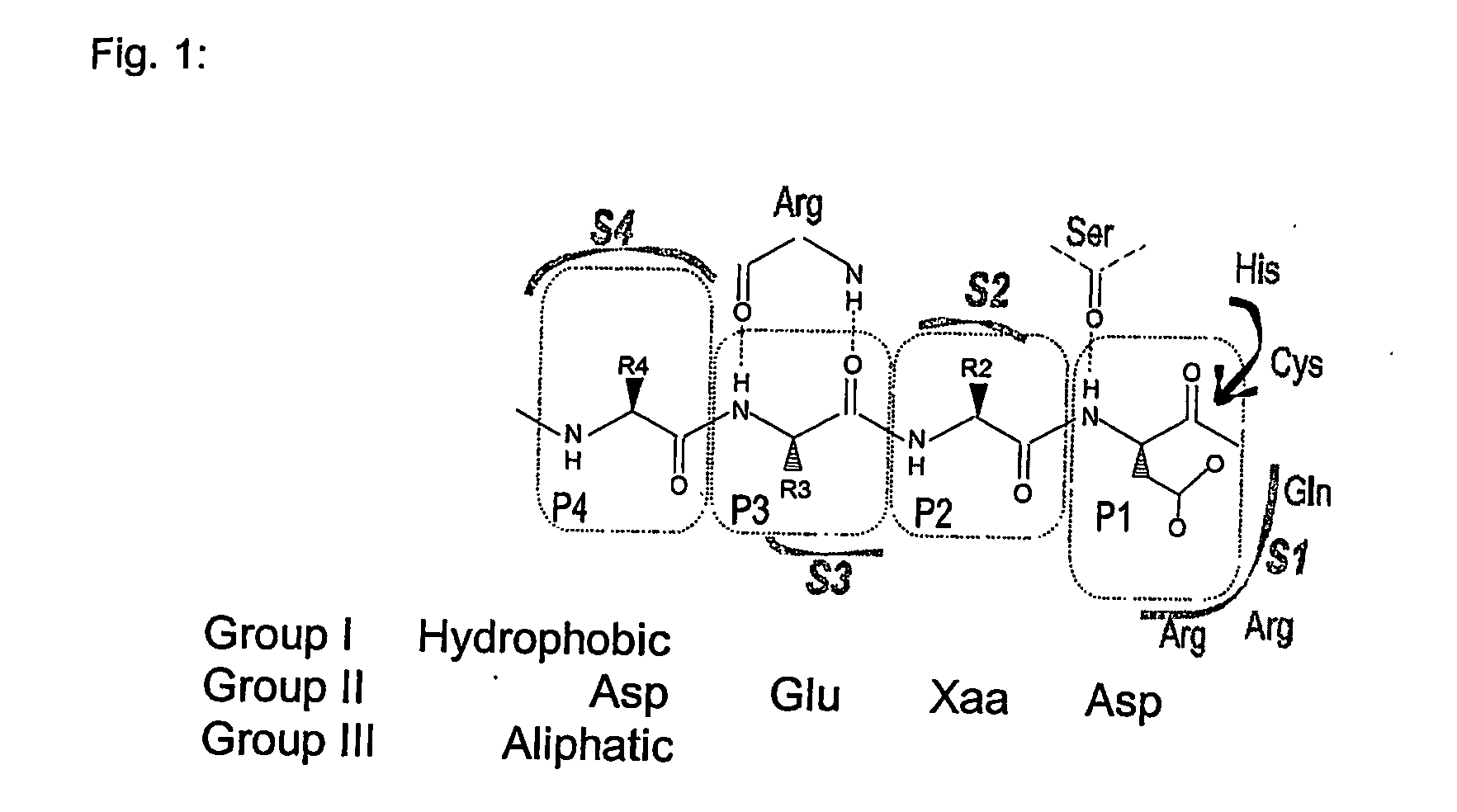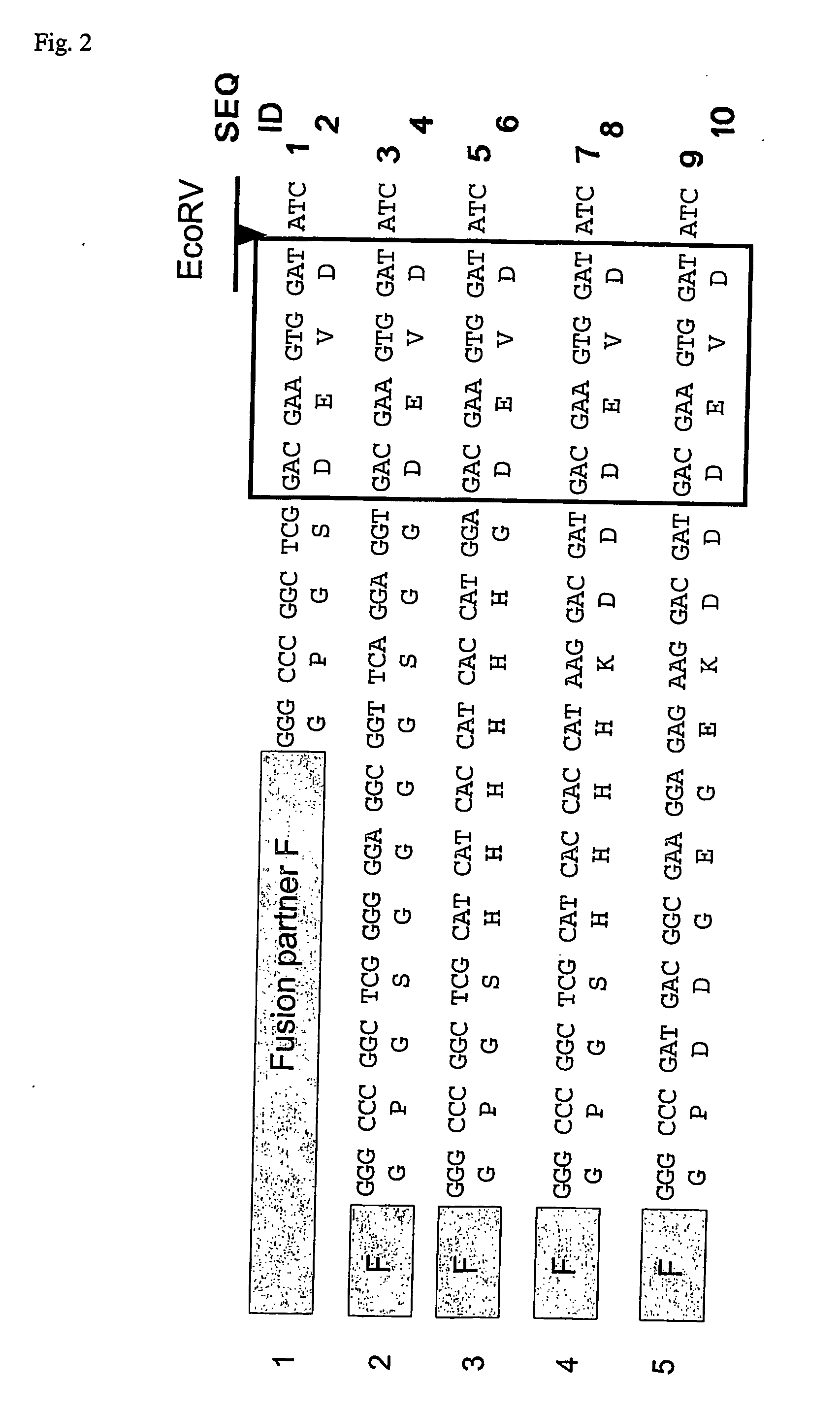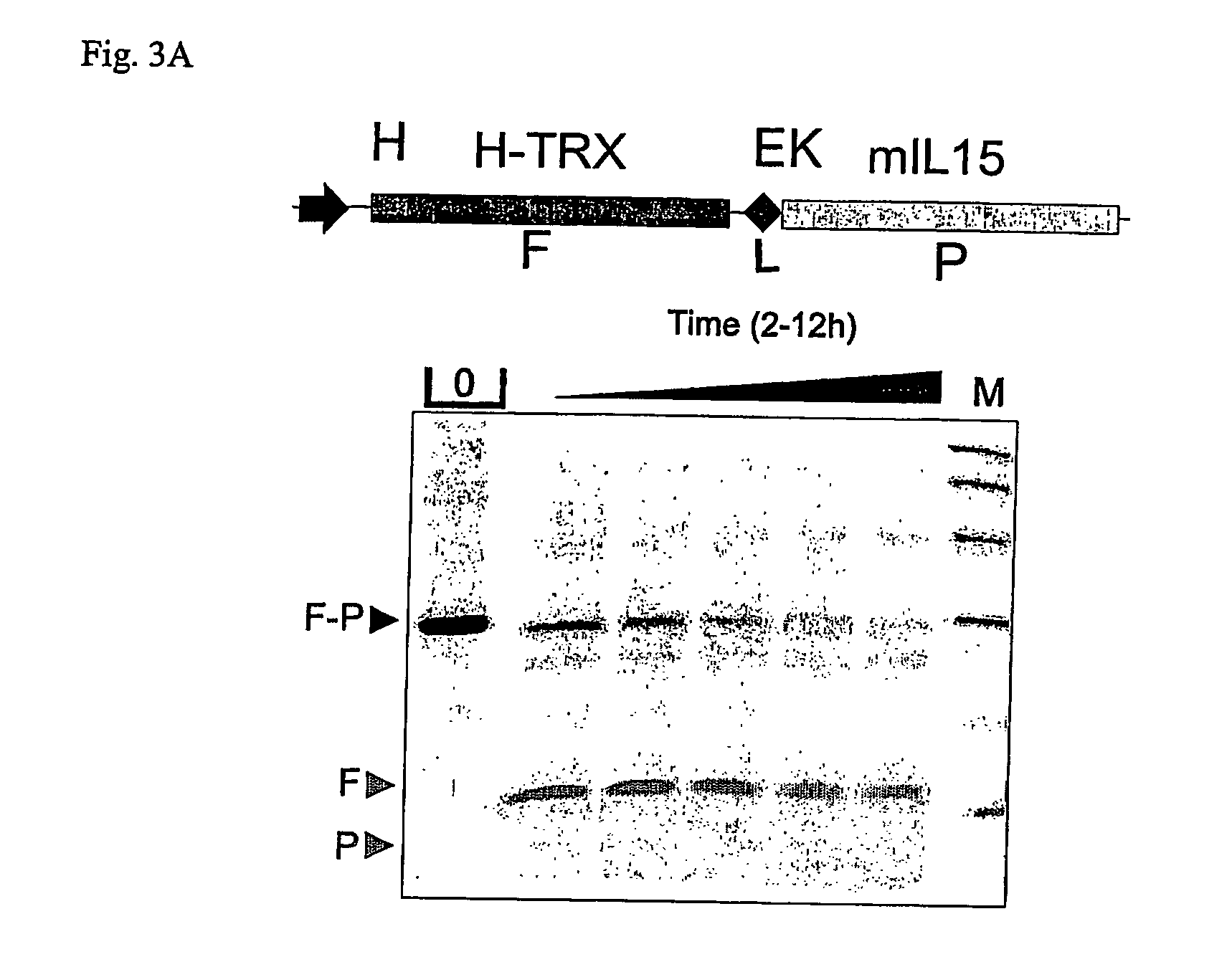Use of caspase enzymes for maturation of engineered recombinant polypeptide fusions
a technology of caspase enzyme and engineered recombinant polypeptide, which is applied in the field of molecular biology, biotechnology or process engineering, can solve the problems of hampered heterologous expression of recombinant proteins, impeded level of translation, and hampered level of protein production, so as to facilitate the recovery process and facilitate the production of recombinant proteins.
- Summary
- Abstract
- Description
- Claims
- Application Information
AI Technical Summary
Benefits of technology
Problems solved by technology
Method used
Image
Examples
example 1
Designing a Cleavable Linker Sequence for Caspases Maturation
[0125] In order to use the method of the invention, one should first design an expression vector for a fusion protein construct, where the fusion construct is separated from the mature protein by a linker sequence. The linker sequence must contain a preferred recognition sequence for a Caspase protein. Examples of such recognition sequences are given in Table I. FIG. 2 shows some examples of linkers that were used for cleavage with Caspase 3.
example 2
Cleavage with Caspase 3 Outperforms Cleavage with Industry Standard Proteases, which Lack Efficiency or Specificity
[0126] Industry standard enzymes for processing fusion proteins in order to obtain a mature protein without any additional amino acid, residual from designing the cleavage site, are not always efficient and can constitute the bottleneck in designing an efficient production process. FIG. 3 a) shows a cleavage experiment of a thioredoxin-murine interleukin 15 fusion gene, separated from each other with a recognition site for enterokinase (TRX-EK-mIL15). Cleavage with enterokinase required a long incubation time in order to process the molecule. In the end, the molecule was processed, which is apparent by the release of the thioredoxin (TRX) protein, but the murine interleukin 15 protein (mIL15) is also degraded by the enzyme or the enzyme preparation. In the other example, in FIG. 3 b), a fusion protein of TRX with human interferon alpha (hIFNα) comprising a linker seque...
example 3
Expression and Purification of Caspases
[0133] The primary structure of the caspase zymogens or procaspases consists of a prodomain followed by a large subdomain of around 20 kDa (p20), and a smaller subdomain of around 10 kDa (p10). A combination of the p10 and p20 is denoted as p30. Active caspase can be obtained by co-expressing the processed subunits as separate subunits. In eukaryotic expression hosts this can be done by co-transfection of two plasmids containing both a promoter followed by a p10 or a p20 encoding gene. Alternatively, an internal ribosomal entry site can be used to express both subunits from a single transcript. In prokaryotes, also two promoter construct can be made, or the two genes can be placed in a single operon. The correct start position of both coding sequences should be engineered to optimize translation initiation in the host cell chosen, as known in the art.
[0134] Also, the caspase enzyme can be expressed as a p30, or as a procaspase. For most caspa...
PUM
| Property | Measurement | Unit |
|---|---|---|
| Fraction | aaaaa | aaaaa |
| Time | aaaaa | aaaaa |
| Affinity | aaaaa | aaaaa |
Abstract
Description
Claims
Application Information
 Login to View More
Login to View More - R&D
- Intellectual Property
- Life Sciences
- Materials
- Tech Scout
- Unparalleled Data Quality
- Higher Quality Content
- 60% Fewer Hallucinations
Browse by: Latest US Patents, China's latest patents, Technical Efficacy Thesaurus, Application Domain, Technology Topic, Popular Technical Reports.
© 2025 PatSnap. All rights reserved.Legal|Privacy policy|Modern Slavery Act Transparency Statement|Sitemap|About US| Contact US: help@patsnap.com



